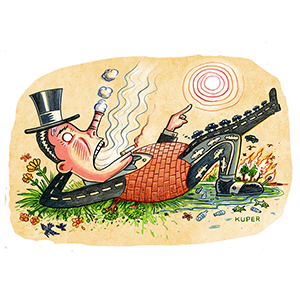My Pet World: How to decide if you should trim your pet bird's feathers
Q: Our sun conure is now one-year-old. When we bought him as a baby his wing feathers were trimmed so he would not fly, but now they have grown back and he is flying all over the house. He leaves a mess everywhere and I want to get his wings trimmed, but my husband and son say he will be happier and healthier if we allow him to fly. What are your thoughts on this? -- Kathi Palmer, Las Vegas, NV
A: This is one of those questions that involve endless debate. For the record, I personally love to see a bird fly and I never trim any of my bird's wing feathers -- I never have and I never will.
However this is to satisfy my desires and has nothing to do with the wellbeing of the birds. A bird does not need to fly to stay in top physical condition, with the exception of species like swifts, hummingbirds and nightjars. Those birds have very small and useless feet that deny them the ability to walk but these are not birds we keep as pets anyway.
A bird that has a rich environment to climb, exercise and given the proper diet can stay physically fit. Birds do not have any psychological need to fly when they are cared for in a happy and safe environment.
Just about every zoo in the USA has ponds and pens with ducks, flamingos and cranes all walking about in them. These birds have all been pinioned, meaning a vet will surgically remove the tip of one of the bird's wings at the first joint. Those birds that are operated on never fly again and they are quite happy and healthy -- the zoo would not render the birds flightless if the result would compromise their physical well-being.
So my point is that the decision to trim a pet bird's wing feathers is a personal one. One observation I have noticed is birds with trimmed feathers have a lot more freedom than those that can fly. Typically when a bird can fly then the owners do not allow it out of its cage very much. In addition, just about every other day I get calls from tearful petkeepers whose birds are perched 100 feet up in a tree outside and have no idea how to get down.
So again, this situation is a personal one and I cannot say what is right or wrong as there is no right or wrong answer. One plus side on making this decision is it is not permanent. A trimmed feathers fall out when the bird molts and thus re-grows. So if you do have the feathers trimmed and do not like the result, then all you need to do is wait a few months and the bird will be flying again, so there is no harm done.
Q: In the past you printed an article about how you felt that some cats digested canned food better then dry food as you felt the canned food was less processed. How do I decide what type of canned food is processed more than others? -- Frank Duffy, Chicago, IL
A: The best answer I can give you is to just read the label of ingredients of that particular food. If you recognize them and would eat them yourself then those are food items that you would want to feed to your pet. If you do not recognize or are not familiar with those ingredients then just pass on that food and pick out one of the other many brands that are out there.
The only exception to this is if your pet is eating a prescription diet from your vet. These prescription diets can have some odd sounding ingredients in them, but they are in the foods to help treat the condition that your pet is suffering from.
Q: I have watched the fall migration at my beach house for the last 40 years and each year I notice there are fewer and fewer Monarch butterflies that migrate through my yard this fall. I have planted butterfly bushes and other flowering plants for them to feed off of but each year there are fewer anyway. Is there anything else I can do to help them increase in population? -- Sharon Herbert, Wilmington, NC
A: While flowering plants does help, what the Monarch butterflies really need are more patches of milkweed to lay their eggs on; that is the only thing their caterpillars eat and if there is no milkweed then no Monarchs.
Milkweed is a native plant and not a weed at all really -- it is not invasive and looks quite pretty. There are lots of companies such as livemonarch.com that offer milkweed seeds to people like you that want to be sure that future generations will still be able to experience the Monarch butterfly. Of course, now it is December and it is too late to think about gardens, but I will be sure to bring this subject up again in late winter when people are buying seeds for their gardens.
========
(Marc Morrone has kept almost every kind of animal as a pet for the last half-century and he is happy to share his knowledge with others. Although he cannot answer every question, he will publish many of those that have a general interest. You can contact him at petxperts2@aol.com; please include your name, city and state.)
(c) 2016 DISTRIBUTED BY TRIBUNE MEDIA SERVICES, INC.






